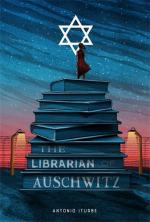|
This section contains 2,117 words (approx. 6 pages at 400 words per page) |

|
Art and Culture
Throughout the novel, Iturbe weaves various forms of art and culture into the narrative to provide context and depth to the characters and their experiences - and ultimately prove the power that it has on the lives of the inmates in Auschwitz. The first example of this is when he uses excerpts from the books hidden in Block 31 to provide a basis to which Dita can relate. She finds herself, at many times, alone and with no one to connect with since she feels more mature and not like other 14-year-old girls locked up in Auschwitz. She fancies herself as more of a scientist and intellect than a beauty queen. This literary strategy is implemented to show the effect that books had on Dita, and how it helped her cope with the sadness and loneliness of being stuck inside a concentration camp for a large portion...
|
This section contains 2,117 words (approx. 6 pages at 400 words per page) |

|




